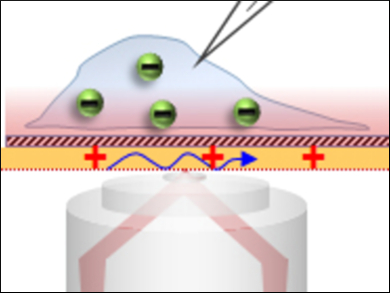Electrical activity is critical to many cellular processes, such as brain signal transduction, cardiac function, and wound healing. Studying the electrical activities in cells are mainly based on electrical measurements using microelectrodes or micropipettes. While powerful, they often lack spatial resolution or imaging capability and can be invasive.
Nongjian Tao, Arizona State University, Tempe, USA, and colleagues have developed a plasmonic imaging technology for resolving local electrical activities in single cells with a sub-millisecond time resolution. The technology converts an electrical signal into a surface plasmonic signal in a metal film, which is detected and imaged optically without using labels. This is possible because the surface plasmon resonance frequency depends on the electron density in the thin metal film, which, in turn, changes with the electric field.
The technology was used to image the initiation and propagation of an action potential in individual mammalian nerve cells. The team hopes that their plasmonic imaging technology will provide new insight into the roles of electrical activity in various cellular phenomena. The technique has potential, e.g., in drug-screening trials that target neuronal and cardiac activities.
- Plasmonic-Based Electrochemical Impedance Imaging of Electrical Activities in Single Cells,
Xian-Wei Liu, Yunze Yang, Wei Wang, Shaopeng Wang, Ming Gao, Jie Wu, Nongjian Tao,
Angew. Chem. Int. Ed. 2017.
DOI: 10.1002/anie.201703033




